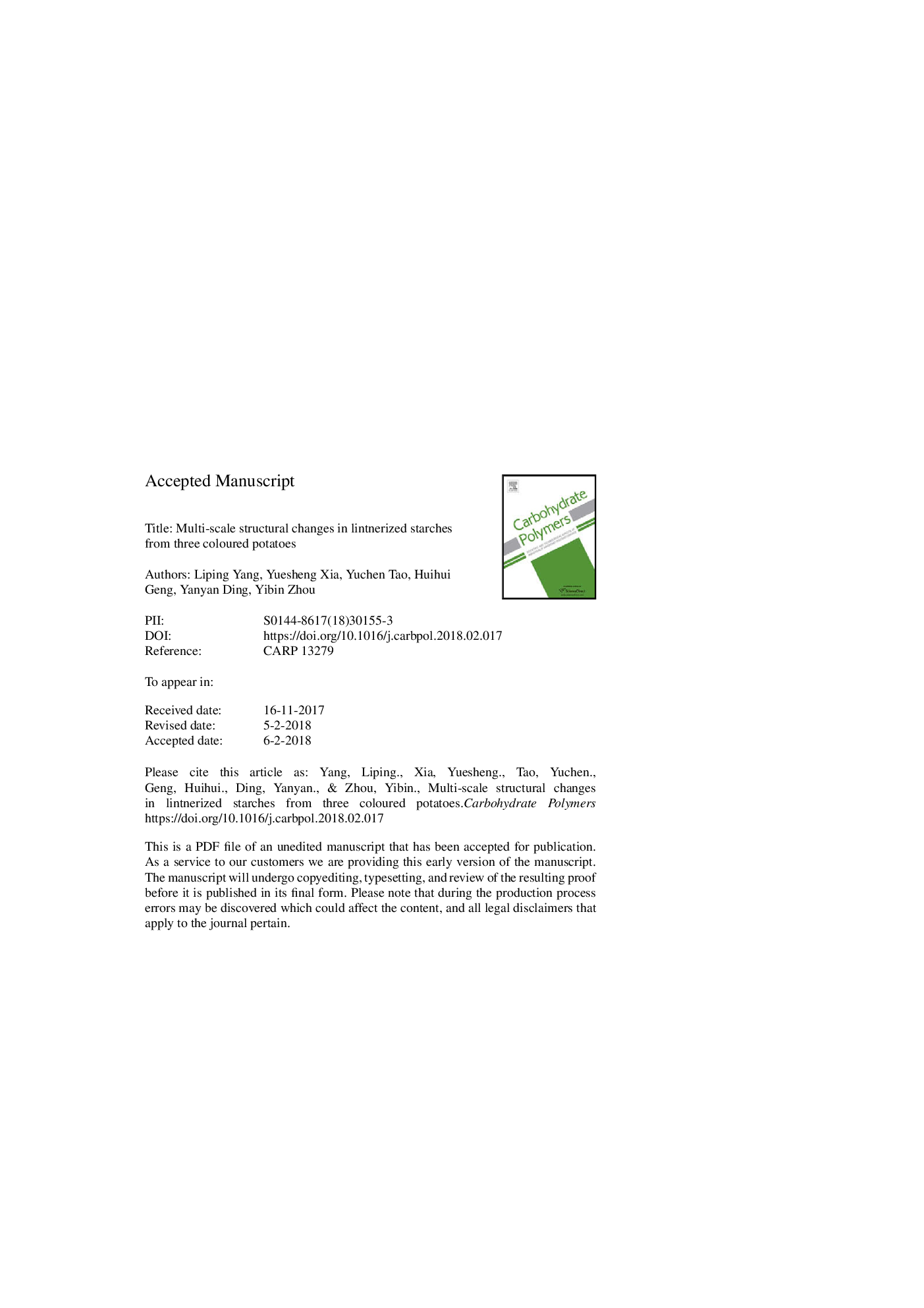| Article ID | Journal | Published Year | Pages | File Type |
|---|---|---|---|---|
| 7783412 | Carbohydrate Polymers | 2018 | 32 Pages |
Abstract
Three kinds of potato starch were treated with 2.2â¯N HCl at 35â¯Â°C for 40 days, and their susceptibility to acid hydrolysis and the resulting structural changes were evaluated. Red potato starch was more susceptible to acid hydrolysis and presented highest rate of hydrolysis. Lintnerized starches had relatively low average molecular weights and z-average radius of gyration. HPAEC analyses showed three lintners presented different molecular size distributions. Lintnerized yellow potato starch had few chains of DPâ¯â¤â¯12 (2.58â¯mol%) and more chains of DPâ¯â¥â¯37 (8.16â¯mol%). Furthermore, the similarities of the branch-chain length distributions before and after debranching indicated the lintners consisted primarily of linear molecules. After lintnerization, most starch granules were degraded, and the birefringence disappeared from some granules. X-ray diffraction patterns revealed that the relative crystallinity significantly increased after lintnerization. DSC analyses showed that lintners displayed broader thermal-transitions.
Keywords
Related Topics
Physical Sciences and Engineering
Chemistry
Organic Chemistry
Authors
Liping Yang, Yuesheng Xia, Yuchen Tao, Huihui Geng, Yanyan Ding, Yibin Zhou,
